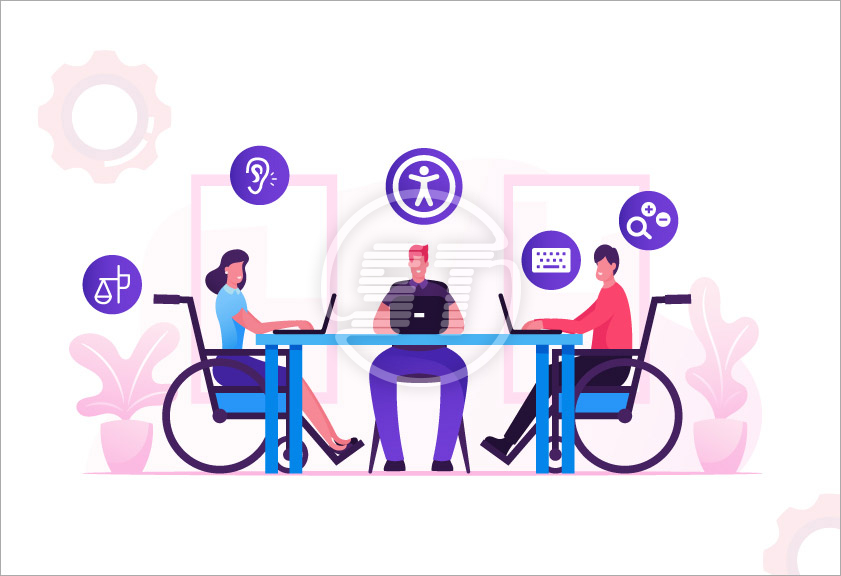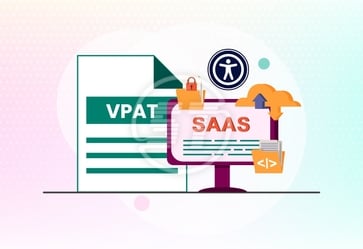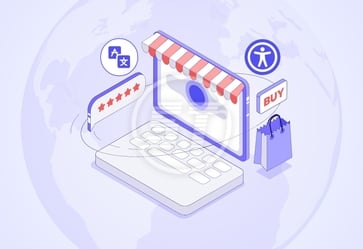Digital accessibility is no longer optional - it’s essential. Every type and size of website ought to ensure digital accessibility to reach a wider audience segment. An improved user experience and a heightened compliance status are what organizations seek, and thus, it is crucial to prioritize accessibility.
When organizations realize the importance of accessibility, the next question often arises: Should they invest in an accessibility tool/software, or hire an accessibility consultant? The answer depends on the goals, resources, and the complexity of the digital ecosystem.
Let’s break it down.
When accessibility tools/software requires?
Accessibility tools or software solutions are designed to automate the compliance process. These can be browser-based checkers, accessibility plugins, widgets, overlays, or AI-powered platforms.
Best suited for:
- Small to medium businesses with limited budgets.
- Organizations seeking quick fixes and basic compliance.
- Teams needing ongoing monitoring without deep in-house expertise.
- Cost-effective solution.
Benefits of accessibility tools/software:
- Cost-effective: Lower upfront investment than hiring a consultant.
- Speed: Can quickly scan and detect common accessibility issues (e.g., missing alt text, color contrast, heading structure).
- Scalability: Ideal for larger sites that need automated scans across hundreds of pages.
- Ongoing monitoring: Many tools track accessibility issues continuously, ensuring updates don’t break compliance.
Limitations:
- They cannot fully capture contextual or human-centered accessibility issues (e.g., confusing navigation for screen readers).
- Overlays or one-click fixes may not guarantee legal compliance.
- May require additional human review for accuracy and implementation.
When is an accessibility consultant the better choice?
An accessibility consultant brings human expertise that goes beyond what automated tools can’t detect. They analyse a digital asset from the perspective of real users with disabilities and provide strategic, actionable guidance.
Best suited for:
- Enterprises or organizations with complex websites, apps, or systems.
- Businesses operating in regulated industries where compliance is critical (banking, healthcare, government).
- Teams are aiming for not just compliance, but an inclusive user experience.
Benefits of hiring a consultant:
- Human insight: Detects issues tools miss - like unclear instructions, inconsistent navigation, or poor keyboard accessibility.
- Tailored solutions:Offers custom recommendations specific to the business and technology stack.
- Training & awareness:Educates the in-house team to make accessible products from the start.
- Compliance assurance:Helps with manual accessibility audit, remediation, VPATs, and documentation for legal and regulatory requirements.
- Futureproofing:Advises on sustainable accessibility strategies rather than quick patches.
Limitations:
- Higher cost compared to tools/software.
- Require more time for audit, reviews, and implementation.
The balanced/hybrid approach: Tools + Consultant!
When it comes to accessibility, the most effective strategy rarely lies in choosing either/or. Instead, the smartest organizations adopt a hybrid approach - leveraging the speed and automation of accessibility tools while combining them with the expertise and human perspective of consultants.
The hybrid approach works best because:
- Covers more ground: Tools handle repetitive checks across hundreds of pages, while consultants identify context-driven issues that software can’t catch.
- Efficiency + Accuracy: Automated scans detect low-hanging issues (like missing alt text or poor color contrast) instantly. Consultants verify accuracy and focus on nuanced barriers, such as confusing navigation or unclear form instructions.
- Continuous compliance: Tools ensure new content and updates remain compliant daily, while consultants conduct periodic reviews aligned with evolving WCAG standards.
- Cost optimization: Tools can manage routine monitoring, whereas consultants are engaged strategically. Using both in long-term saves costs and ensures inclusivity.
- Education + Empowerment: Consultants can train the team to build accessibility into the development workflow, while tools act as a constant safety net.
In short, tools provide speed and scalability, while consultants provide insight and accuracy.
How to select the right approach: Tool/Software or Consultant!
Selecting between an accessibility tool/software and a consultant isn’t always straightforward. The decision depends on the business goals, resources, and the accessibility compliance status of a digital property.
- Define the primary goal
- Consider the complexity of a website or application
- Evaluate the budget
- Assess the in-house expertise
- Compliance vs. Inclusivity
- Ongoing monitoring vs. Strategic guidance
If the goal is quick compliance or basic accessibility fixes, a tool/software can help meet minimum requirements fast.
If the business goal is building an inclusive digital experience, an accessibility consultant can help craft a long-term accessibility strategy.
Simple websites or online stores with limited pages may benefit more from tools/plugins that provide easy integration.
Complex enterprise systems or apps often have unique navigation flows, multimedia, and custom code that require expert human review.
Tools/software are generally more budget-friendly and come with predictable subscription costs.
Consultants are a bigger investment but offer tailored insights, training, and compliance assurance that can prevent costly lawsuits later.
If internal teams lack accessibility knowledge, a consultant can train them and guide best practices.
If organizations already have a capable team, a tool may be enough to complement their work and automate repetitive checks.
Tools check the compliance box and reduce immediate risks.
Consultants ensure complete inclusivity by addressing user experience challenges that automated scans miss.
Accessibility is not a one-time task. Tools/software provide continuous monitoring to flag issues as the site evolves.
Accessibility consultants provide strategic oversight - audits, remediation plans, and roadmaps for future accessibility goals.
Also read: SOC Type 2 Certified Vendor for accessibility services
In a nutshell,
Accessibility is a journey, not a checkbox. Tools and software can help organizations move faster, but human expertise ensures they ’re moving in the right direction. If they want to stay compliant and genuinely serve all users, consider starting with accessibility tools for quick wins, and bring in a consultant for deeper, lasting impact.
Selecting between an accessibility tool and an accessibility consultant doesn’t have to be complicated. We offer both - the All in One Accessibility® widget for quick, automated accessibility compliance improvements and accessibility consulting, and comprehensive accessibility remediation services for in-depth, manual evaluations and WCAG conformance. Whether you’re looking for an easy-to-integrate solution or expert accessibility guidance to make website fully accessible, we help you make the right move toward digital inclusion. Reach out hello@skynettechnologies.com for more information.


